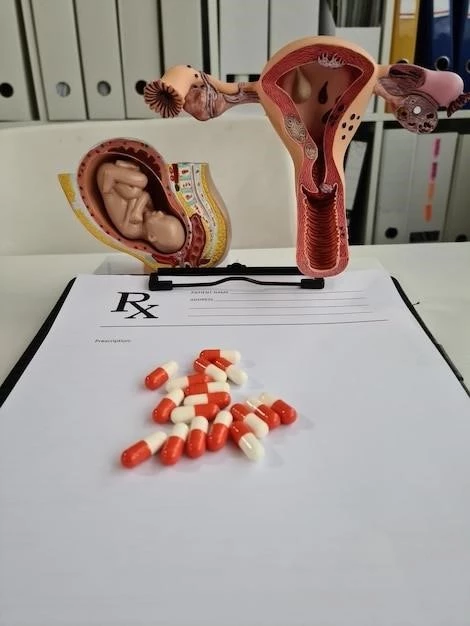Introduction
A virilizing ovarian tumor is a rare cause of hyperandrogenism affecting pre- and postmenopausal women. Early detection through imaging techniques is crucial for appropriate management.
Definition of Virilizing Ovarian Tumor
A virilizing ovarian tumor (VOT) is a rare neoplasm that can affect reproductive-age and postmenopausal women. These tumors are characterized by androgen overproduction leading to virilization, including symptoms such as hirsutism, voice deepening, and clitoral enlargement.
Most virilizing ovarian tumors are classified as sex cord-stromal tumors, with common types including Sertoli-Leydig cell tumors, granulosa cell tumors, and fibrothecomas. These tumors often present with symptoms of hormone excess, such as rapidly progressing hirsutism and virilization.
Diagnosis of a virilizing ovarian tumor can be challenging due to its rarity and varied clinical manifestations. Imaging techniques, hormonal assessments, and histopathological analysis play crucial roles in accurately diagnosing and managing these rare tumors.
Clinical Presentation
Virilizing ovarian tumors lead to hyperandrogenism, causing symptoms like hirsutism, voice changes, and clitoromegaly. They are rare but crucial to diagnose for appropriate management.
Signs and Symptoms
Virilizing ovarian tumors present with signs of hyperandrogenism, including hirsutism, deepening of the voice, and clitoromegaly. Identifying these symptoms is crucial for early diagnosis and appropriate management of these rare tumors.
Virilizing ovarian tumors are a rare cause of hyperandrogenism in both pre- and postmenopausal women. These tumors, while uncommon, can significantly impact the endocrine system and overall well-being of affected individuals.
Diagnosis
Diagnosing virilizing ovarian tumors involves a combination of imaging techniques and hormone assessments. Early detection is crucial for effective management of these rare neoplasms.
Prevalence in Pre- and Postmenopausal Women
Virilizing ovarian tumors, although rare, can affect both pre- and postmenopausal women. These neoplasms, accounting for less than 1% of ovarian tumors, present unique challenges in diagnosis and management across different age groups.
Challenges in Diagnosis
Diagnosing virilizing ovarian tumors presents challenges due to their rarity and varied clinical manifestations. Differentiating them from other ovarian neoplasms and assessing the hormonal imbalances they cause can be complex, highlighting the need for specialized diagnostic approaches.

Classification
Virilizing ovarian tumors are mainly sex cord-stromal neoplasms, with types like Sertoli-Leydig cell tumors and granulosa cell tumors. These tumors often result in hormonal imbalances.
Types of Virilizing Ovarian Tumors
Virilizing ovarian tumors are predominantly classified as sex cord-stromal neoplasms, with common types including Sertoli-Leydig cell tumors and granulosa cell tumors. These tumors often lead to hormonal imbalances and present unique diagnostic challenges.
Androgen-Secreting Tumors
Virilizing ovarian tumors, primarily sex cord-stromal neoplasms, are known for androgen overproduction causing symptoms of virilization. One common type, the Sertoli-Leydig cell tumor, presents unique diagnostic and treatment challenges due to its hormone-secreting nature.
Treatment
The management of virilizing ovarian tumors involves a surgical approach for tumor removal and the correction of hormonal imbalances through specialized interventions to improve patient outcomes.
Surgical Approach
The primary treatment for virilizing ovarian tumors involves surgical removal of the tumor. A precise surgical approach is crucial in ensuring complete resection and minimizing the risk of recurrence, contributing to better patient outcomes.
Management of Hormonal Imbalance
The management of hormonal imbalances caused by virilizing ovarian tumors includes specialized interventions aimed at correcting the excess production of androgens. Establishing a hormonal balance is crucial for the overall well-being of patients affected by these rare neoplasms.

Prognosis
Survival rates for virilizing ovarian tumors are influenced by factors like early diagnosis and effective surgical interventions. Understanding the reoccurrence patterns of these tumors is crucial for long-term management.
Survival Rates
The survival rates of individuals with virilizing ovarian tumors are influenced by various factors, including the timeliness of diagnosis and the effectiveness of treatment modalities. Early detection and appropriate management are crucial in improving the prognosis and outcomes for patients affected by these rare neoplasms.
Reoccurrence of Tumors
Understanding the reoccurrence patterns of virilizing ovarian tumors is essential for long-term management. Patients require close monitoring post-surgery to detect any signs of tumor reoccurrence promptly for timely intervention and improved prognosis.
Research and Developments
Advancements in treatment options for virilizing ovarian tumors are vital to improving patient outcomes. Current studies focus on diagnostic accuracy and personalized therapeutic approaches for these rare neoplasms.
Advancements in Treatment Options
Advancements in the treatment of virilizing ovarian tumors are essential for improving patient outcomes. Researchers are focusing on developing personalized therapeutic approaches and enhancing diagnostic accuracy for these rare neoplasms. The goal is to provide patients with more effective and tailored treatment options that can lead to better prognoses and quality of life.
Current Studies on Virilizing Ovarian Tumors
Studies on virilizing ovarian tumors focus on the diagnostic challenges posed by these rare neoplasms. Research emphasizes the importance of clinical manifestations and advanced imaging techniques to enhance accurate diagnosis and optimize treatment strategies for improved patient outcomes.
